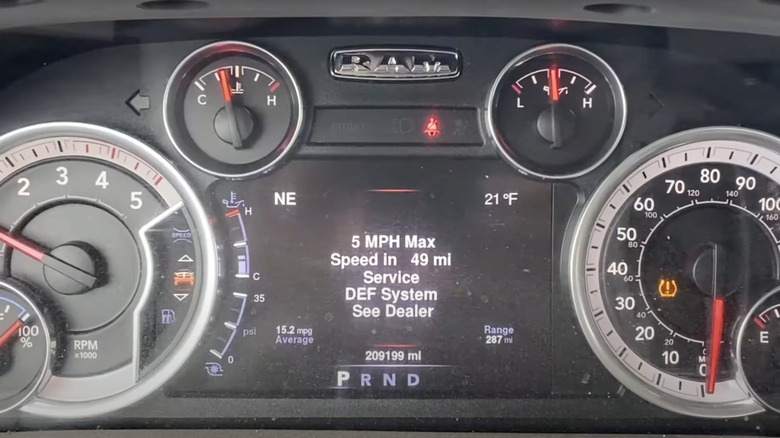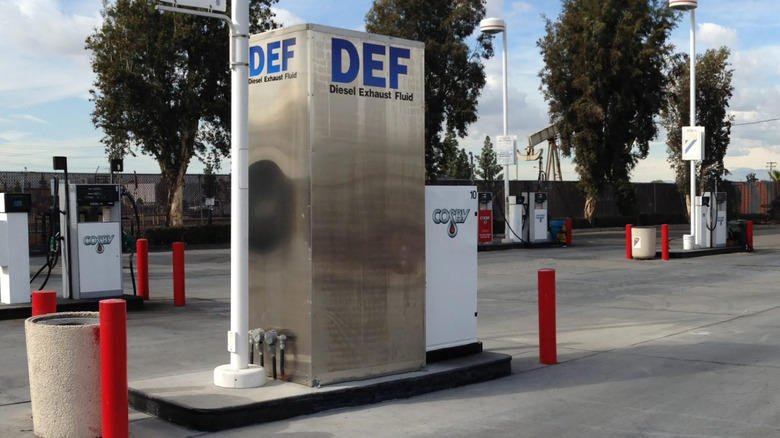How To Get Your Cummins Out Of Limp Mode (And What Causes It In The First Place?)
When your Cummins goes into limp mode (aka low-power mode or safe mode), it's the truck's way of telling you something's wrong, while still letting you crawl to safety. It restricts speed and power to protect major components like the engine or transmission from further damage. Most Cummins (or diesel trucks for that matter) behave similarly when in limp mode. But let's pick the Dodge Ram 2500 for simplicity's sake.
For models equipped with the 68RFE or AS69RC automatic transmissions, the owner's manual outlines a basic reset sequence that can temporarily restore normal gear operation if the issue was momentary. Here's what to do: come to a complete stop, shift into PARK, turn the ignition OFF, wait for about 30 seconds, then restart the engine and shift into DRIVE. If the underlying fault is no longer detected, the transmission exits limp mode and resumes normal shifting. But if the problem persists, the truck will stay in limp mode or re-enter it shortly after restarting.
That's just one scenario, as limp mode triggered by emissions-related issues are often more serious. Let's take the Cummins ISB or ISC/L engines found in Freightliner Cascadias as an example. Low DEF levels will impose a 5 mph speed cap that kicks in after the next engine shutdown or while parked/idling, and it's important to knowwhat to do when you run out of DEF. Any other reasons, and usually only a service facility, can deactivate the limits and reset the system.
Here's what puts your Cummins in limp mode
Again, limp mode is usually triggered by mechanical or electronic faults and one of the most common triggers is engine overheating. The ECU senses rising temps and immediately scales back performance to protect critical parts like pistons and gaskets. Likewise, low oil pressure can also prompt limp mode, often a result of dirty oil or a failing pump. Contaminated DEF or tampering with the Selective Catalytic Reduction (SCR) system can also lock you in the mode.
Transmission faults are another big reason. Bad transmission fluid, a failing clutch, or a faulty TCM will cause the system to restrict gears. The Dodge Ram system limits you to a single forward gear until the fault clears. Sensor failures are also notorious for tripping the limp mode. Mass Air Flow, throttle position, speed sensor, or oxygen sensors can feed faulty data to the ECU, prompting a protective shutdown. Turbocharger issues are another cause, especially in diesels, with loss of boost pressure or a faulty turbo sensor being common triggers.
When limp mode won't quit, and how to keep it from coming back
If your Cummins stays stuck in limp mode even after a reset, it's time for a deeper diagnosis. First, connect an OBD-II scanner to the dedicated OBD port to pull diagnostic trouble codes (DTCs) — or get a mechanic to do so. These will tell you whether the issue is related to emissions, engine performance, or electrical faults. Codes like P208A or P1C55 typically indicate DEF or NOx sensor issues, and at that point, only a shop visit will resolve the problem.
To avoid hitting limp mode in the first place, start with better DEF fluid. Products like BlueDEF Platinum are formulated to reduce buildup and system contamination. Routine maintenance is also essential. Keep fluids fresh, sensors clean, and watch for early signs like fluctuating RPMs or delayed shifts. Replace the fuel filter regularly and keep the turbo system leak-free. It's far cheaper to service a sensor or flush a system than to replace a transmission or pay around $2,500 for a DEF pump.


